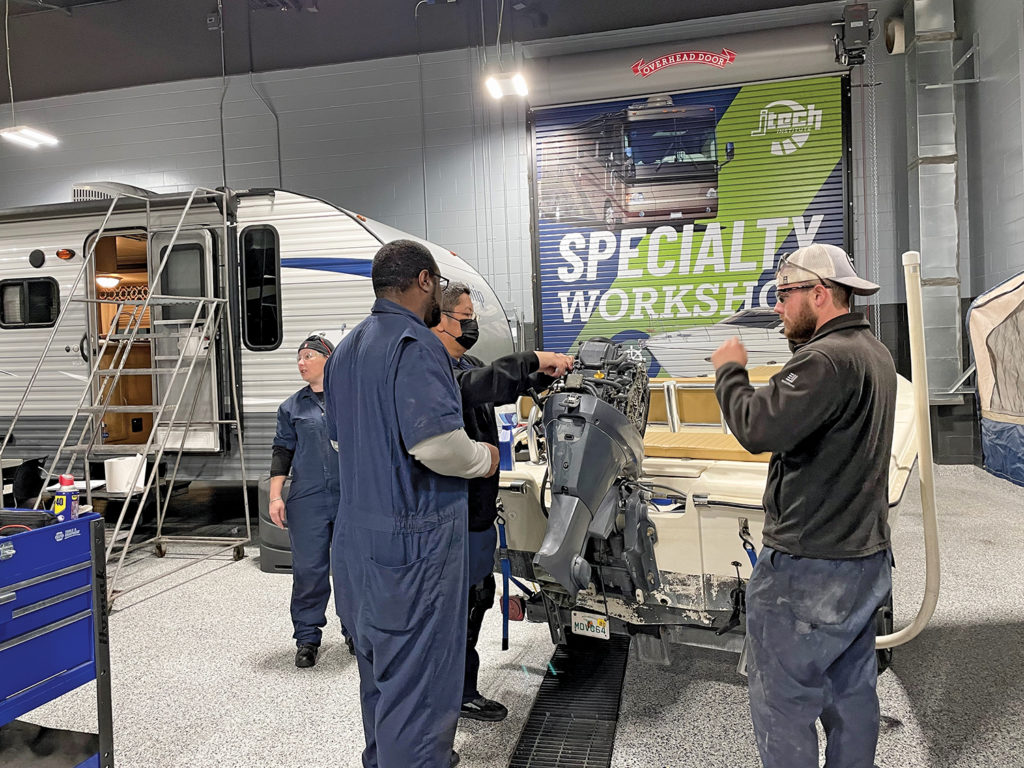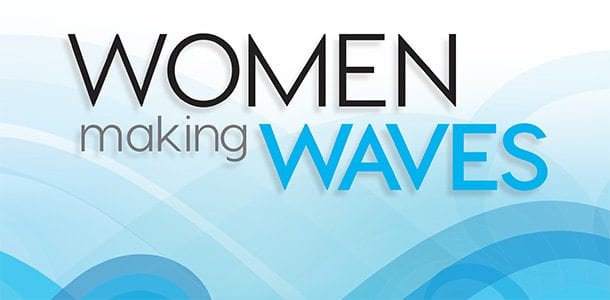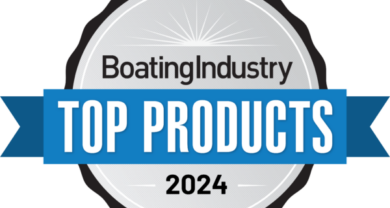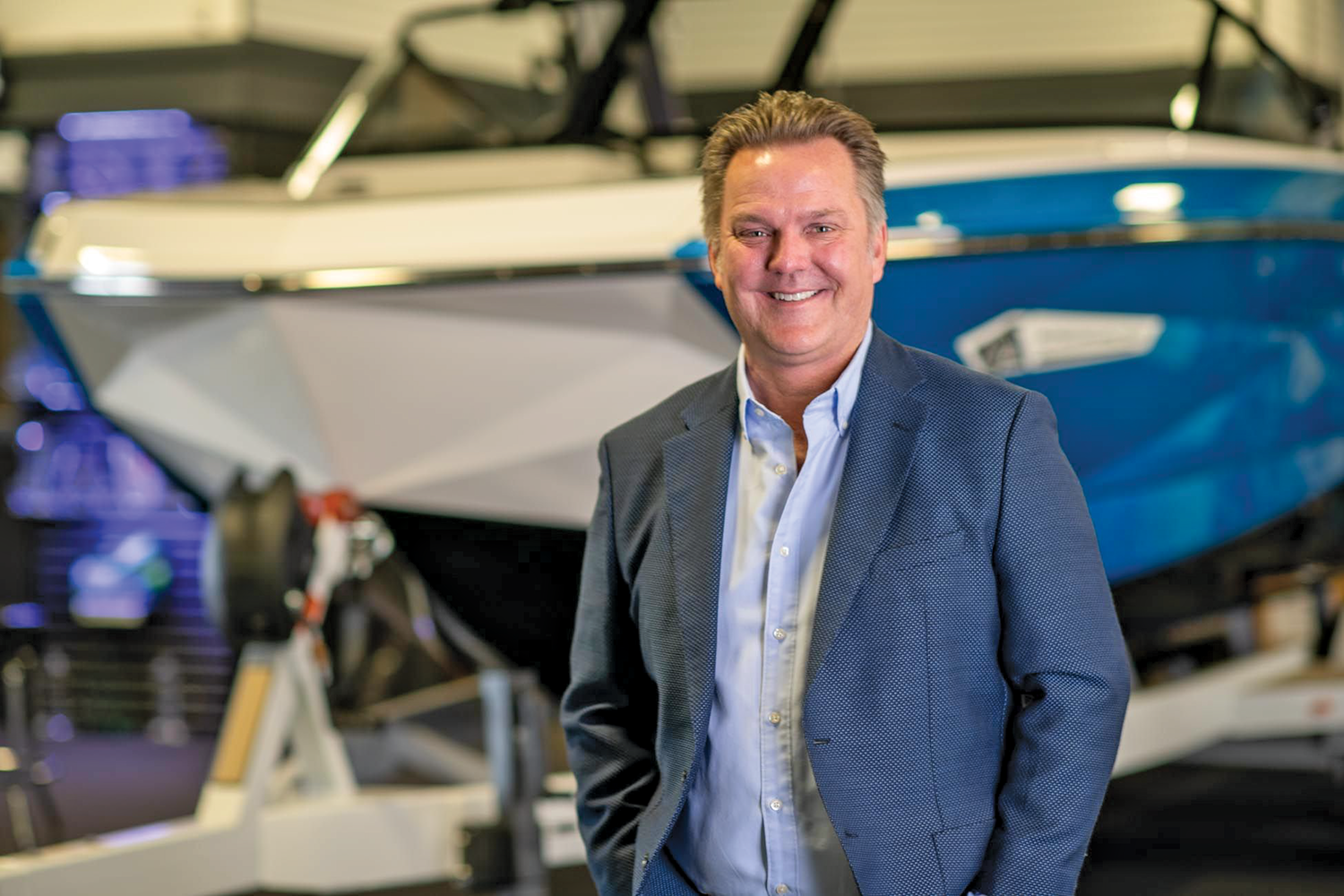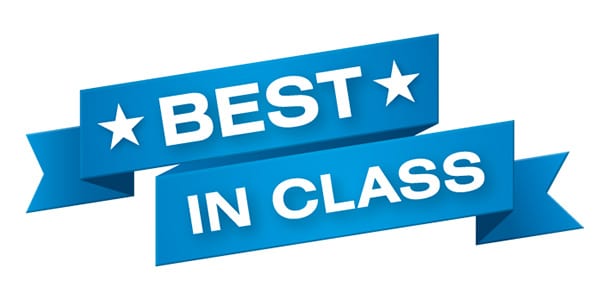Workforce development: Working towards the future

By Jamie Stafford
It seems that this has been the decade of novel challenges. Supply chain shortages continue to plague the global economy as we all grow weary of new strains of Covid-19. Unfortunately, supply chain issues are not the only shortages on hand. The marine industry is no stranger to workforce insufficiency, but now more than ever, this critical lack of qualified workers has hit hard.
Boating Industry has previously written about the workforce crisis, a problem that has become familiar and stubborn. Finding skilled talent has always been difficult. Even those approaching the industry found themselves out of their depth due to a lack of robust education and support. University cast a long shadow over all trade industries, and many students had little idea of the opportunities out there.
Now, however, we’ve begun to see a trend away from the idea of needing a four-year degree to land a good job and be successful. Trade school has reappeared on the radars of many students who wish to enter the workforce immediately and avoid large amounts of debt.
A work-ready focus
Workforce development has remained top of mind across the entire economy. Recruiting new talent as the previous generation comes of retirement age and leaves the industry is proving to be a significant hurdle when visualizing the future. Manufacturers like Yamaha Marine are combating this with “work-ready” education programs. We spoke with Joe Maniscalco, Division Manager, Service about some of these programs.
“On developing technicians, our focus has been looking at institutions that have marine programs in them and providing them with industry resources, support and products that they need in order to support their students to be work-ready,” Maniscalco says. Yamaha currently has two programs available to their technical school partners. These programs provide specific education on Yamaha’s outboard and jet propulsion systems.
“From there,” Maniscalco continues, “we look at what we need in order to help a student become work-ready. It started with the maintenance certification program. This program was designed to give the student the confidence to be able to perform routine maintenance on Yamaha outboard products.”
When asked about the challenges that the company faces, Maniscalco was quick to pinpoint the problem: “Technicians have been the number one industry challenge, so that’s also been our number one area of concentration. We wanted to bring the certificate courses to a certification level. A certification shows that a student has met the standards set by the manufacturer and has the competency to perform the work. By allowing institutions to conduct this certification program, this produces work-ready technicians who can move straight into dealerships.”
All hands on deck
Dealerships face their own set of unique challenges when addressing workforce development. Unlike manufacturers or trade associations, dealers are not readily able to connect with prospective workers through extensive outreach, especially smaller, family-run operations. We spoke to Nick Doetsch, the general and operations manager of Pasadena Boatworks about challenges in the industry.
“One of our biggest challenges is longevity,” Doetsch remarks. “The main issue is that it takes a long time to learn everything.” Marine technician training is quite complicated, because there variety of different systems and motors to learn.
The existing pool of talent is quite small as well. Technicians often stay with dealerships long term. Without much movement into the industry, dealerships are trying to attract talent that has already established itself – certainly no easy feat.
Even after marine technicians receive their certification, they are still constantly learning and updating their knowledge base. Dealerships often send their technicians to classes created and taught by large manufacturers such as Yamaha and Suzuki. “The problem [about these classes],” Doetsch explains, “is that they’re only offered one or two places in the entire country. There’s only so many classes and they get filled up quickly – so there is a lot of interest in schooling and learning.”
The limited offering of classes makes planning around them difficult for dealerships. “There just isn’t a really great area for people to get taught quickly. You’ll go down there for a week; what happens is the dealer says, ‘when can I do that?’ Typically, not during the busiest time of year, but looking at when classes are offered, it may not work out for the class that the dealership needs.”
This ties back to the question of longevity as well. “How many dealerships want to send an 18 or 19-year-old for a costly week-long class in order to start a process that may take years, with no guarantee that they’ll stay in the industry?” Doetsch asks. “It’s a very difficult equation to answer. Our best bet is to always compensate early, and educate everyone – at every level.”
The trend towards trade
The trade industry has certainly suffered under the ever-present expectation of a four-year degree. High school is geared towards university. “Our society has been very pro-college,” Joe Maniscalco agrees. “High school students get college prep – they go through rigorous training to get credits before they even enter into college. Not everyone has the opportunity or desire to go through college. You can go through a trade program and learn a competency, and you can do it in a manner where you are paid as you go.”
The financial benefits of trade school are becoming more and more well-known to students as well. Overall less time spent in school (and away from the workforce), less debt, and more specification are all strong draws for trade school and certification programs.
“We are very pro-apprenticeship,” Maniscalco says. “We established the Yamaha Marine Apprenticeship program which allows a student at a dealership to connect with a mentor and go through an established program from apprenticeship to journeyman.”
Yamaha isn’t the only one ramping up efforts to reach students. The Marine Industries Association of South Florida (MIASF) has created the Salty Jobs Initiative, which targets students of all ages who may be interested in the marine industry, among other outreach and education programs. We spoke with Lori Wheeler, VP of MIASF, and Megan Piggott, director of marketing and workforce development at MIASF, about Salty Jobs.
“We started with the mission of building a talented workforce. The Salty Jobs Initiative is a brand we’ve created that’s an educational video series, along with other media, that show students what different careers in the marine industry look like. It’s about building awareness of what opportunities are out there,” explains Megan Piggott.
MIASF also spearheads the Yacht Service Technician Apprenticeship Program. “The program was started in collaboration with Atlantic Technical College and the Florida Department of Education,” says Lori Wheeler. “It’s a two-year program where there is classroom instruction as well as on-the-job training instruction and students graduate with a nationally recognized certificate. We cover topics such as shipyard safety, rigging, workplace employability, yacht painting, welding, fabricating and plumbing.”
Currently, MIASF is preparing for the annual Plywood Regatta, an event to connect middle and high school students with the marine industry. “They come out for a weekend and build a boat out of plywood, caulk and zip ties, and they’re mentored by someone in the industry who can showcase that passion and knowledge,” Piggott says.
“It’s a perfect introduction into boat building,” Wheeler adds. “It’s a fun event, but the goal is to get them excited about the marine industry. We’re trying to spread the word and get in front of as many young people as we can.”

